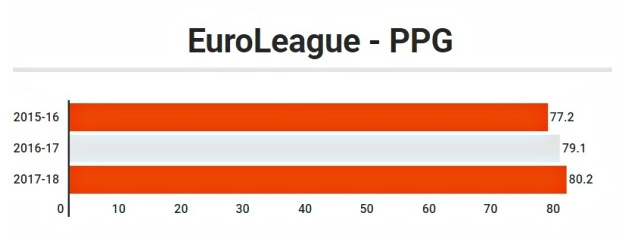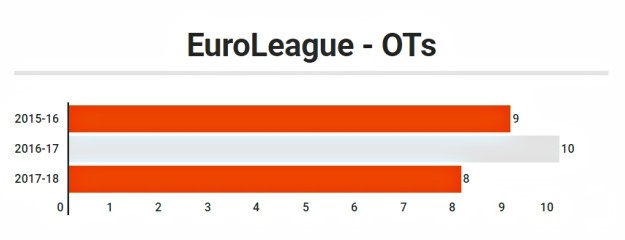By John Rammas/ irammas@eurohoops.net
On December 21, 1891, in Springfield, Massachusetts, Dr. James Naismith of Canada introduced a new sport to the world, basketball. On January 15, 1892, that same man published the first 13 rules of the game in The Triangle, a local newspaper. The first rule said that “the ball may be thrown in any direction with one or both hands,” and the eighth rule said that “a goal shall be made when the ball is thrown or batted from the grounds into the basket and stays there.”
126 years later, the fundamental principles of basketball have remained the same and they will stay the same no matter how many years go by. Despite this, over time the sport has been anything but stagnant. The same goes for those that serve it, including the EuroLeague.
In 2016, the EuroLeague introduced a new format for the top European club competition. The league downsized from 24 teams to 16, however, it made the schedule longer, fairer and more attractive with 30 rounds in which each team would play every other twice, once at home and once away. Even before the first season of this new system was completed, the undertaking had already been deemed successful. The reasons for its success weren’t solely because of the extra amount of interest generated nor because of the ever-increasing number of close games. The league also saw a scoring spike that season.
In the 2015-16 season, EuroLeague fans saw 77.2 points scored per team per game and within a year and a half that average has exceeded 80 points. Last season, the first one with the new system, that average was 79.1 points and this season, with 26 rounds behind us, the scoreboard shows 80.2 points.

Reducing the shot clock from 24 seconds down to 14 after an offensive rebound, in effect since 2014, has contributed greatly to this increase in scoring since now there are more possessions and the EuroLeague continues to contribute to the evolution of the sport with other improvements.
In 2016, before the start of the first season with the new format, the teams’ coaches met and were briefed by the heads of the refereeing committee about deeming fouls to be “unsportsmanlike” when there is no attempt at the ball. This was aimed at putting an end to tactical fouls teams employed to deny opponents on the fast break.
Everyone agreed that this change would contribute to a faster pace, but since it has turned many of those fouls into baskets, it has accordingly contributed to the scoring rise.
It should be noted that the increase has occurred despite virtually no change in the number of overtimes per season since then. In the 2015-16 season, a total of nine games went to overtime from a total of 250 games, in 2016-17 there were 10 overtime games from 259 and this season there have been eight overtime games from the first 206 contests.



